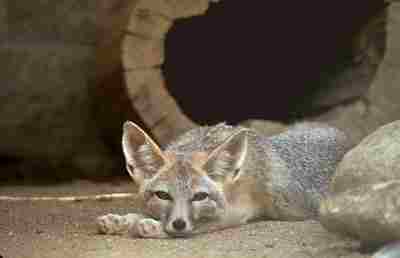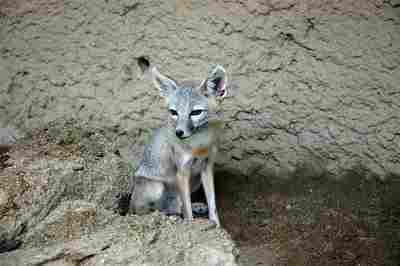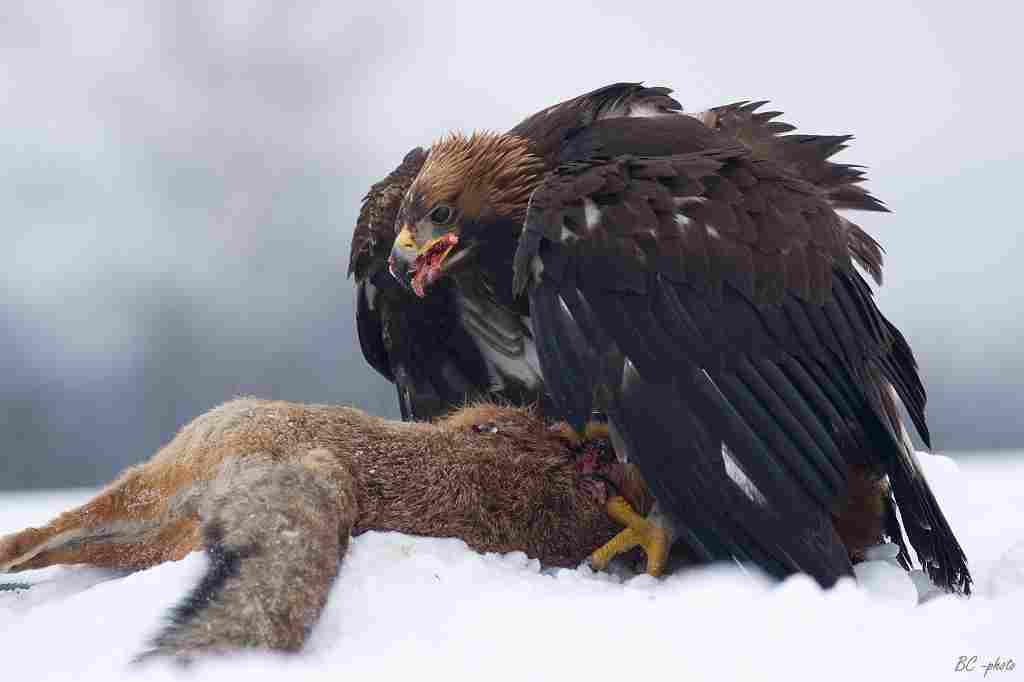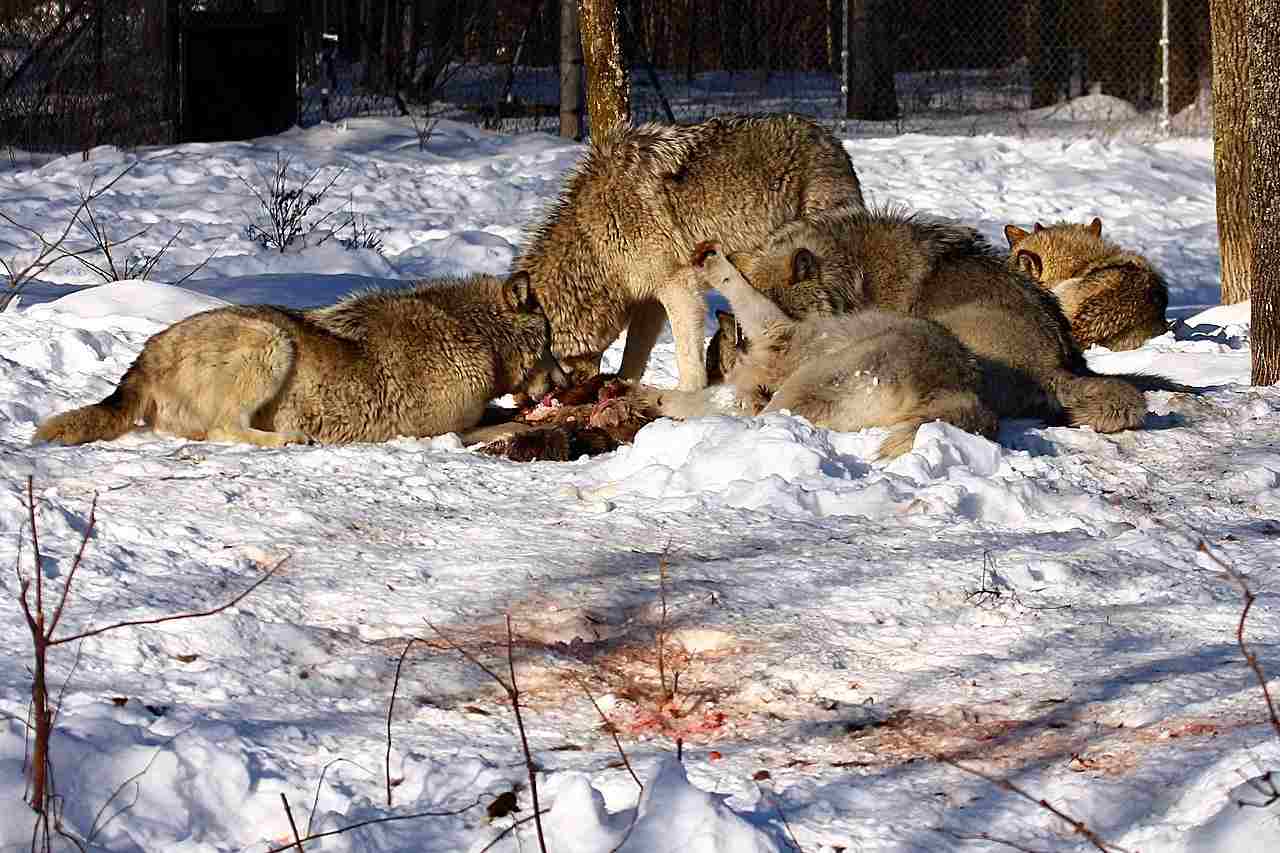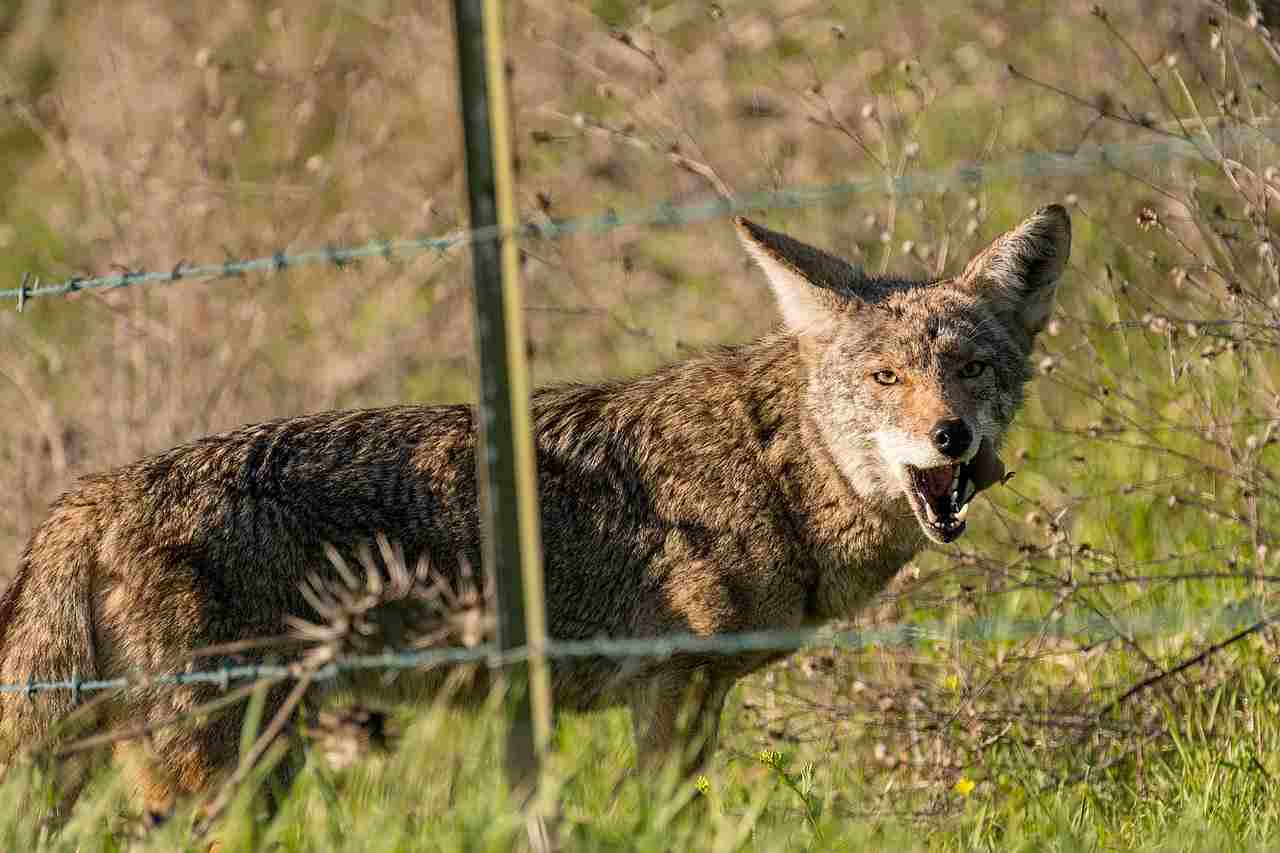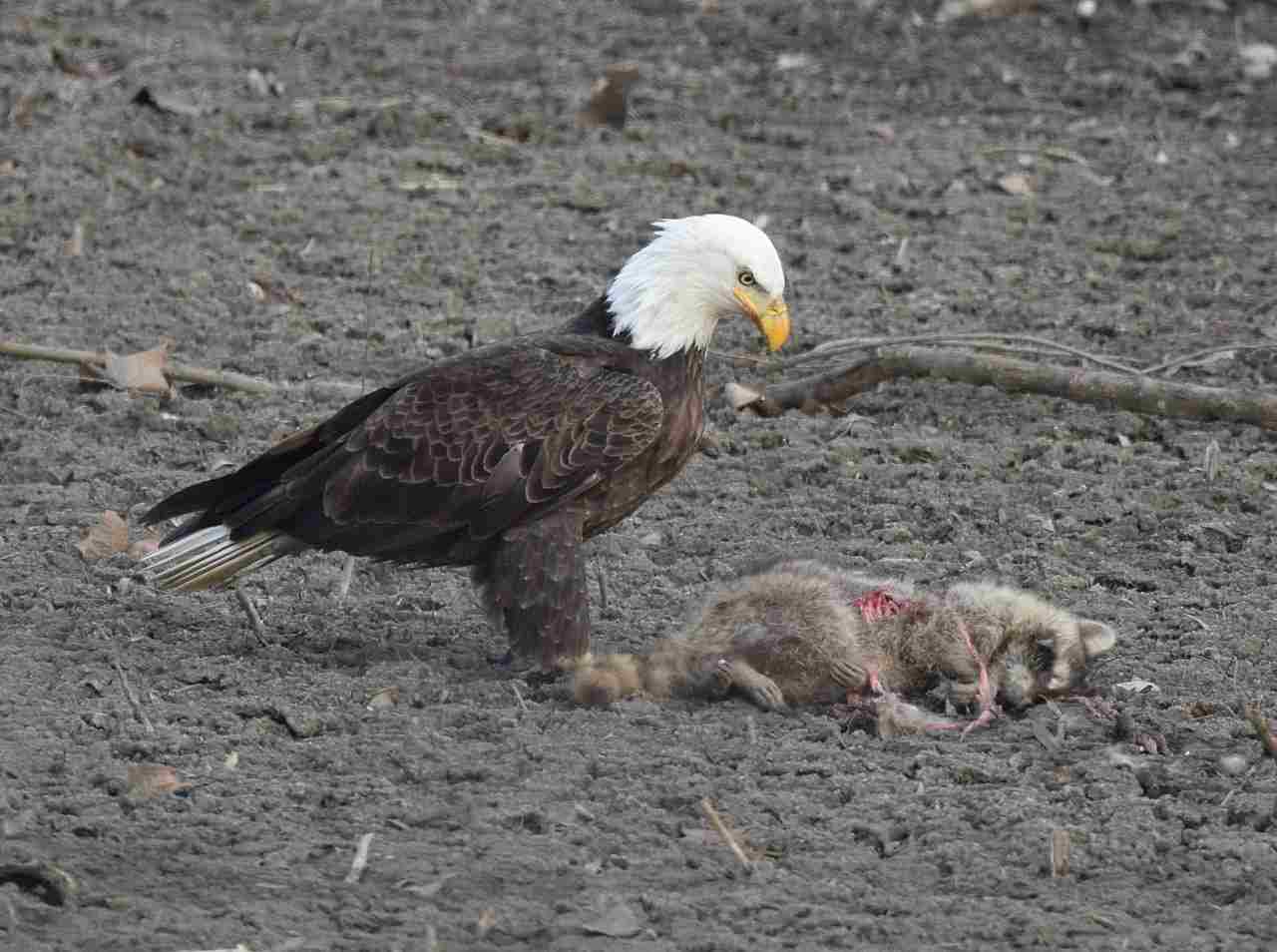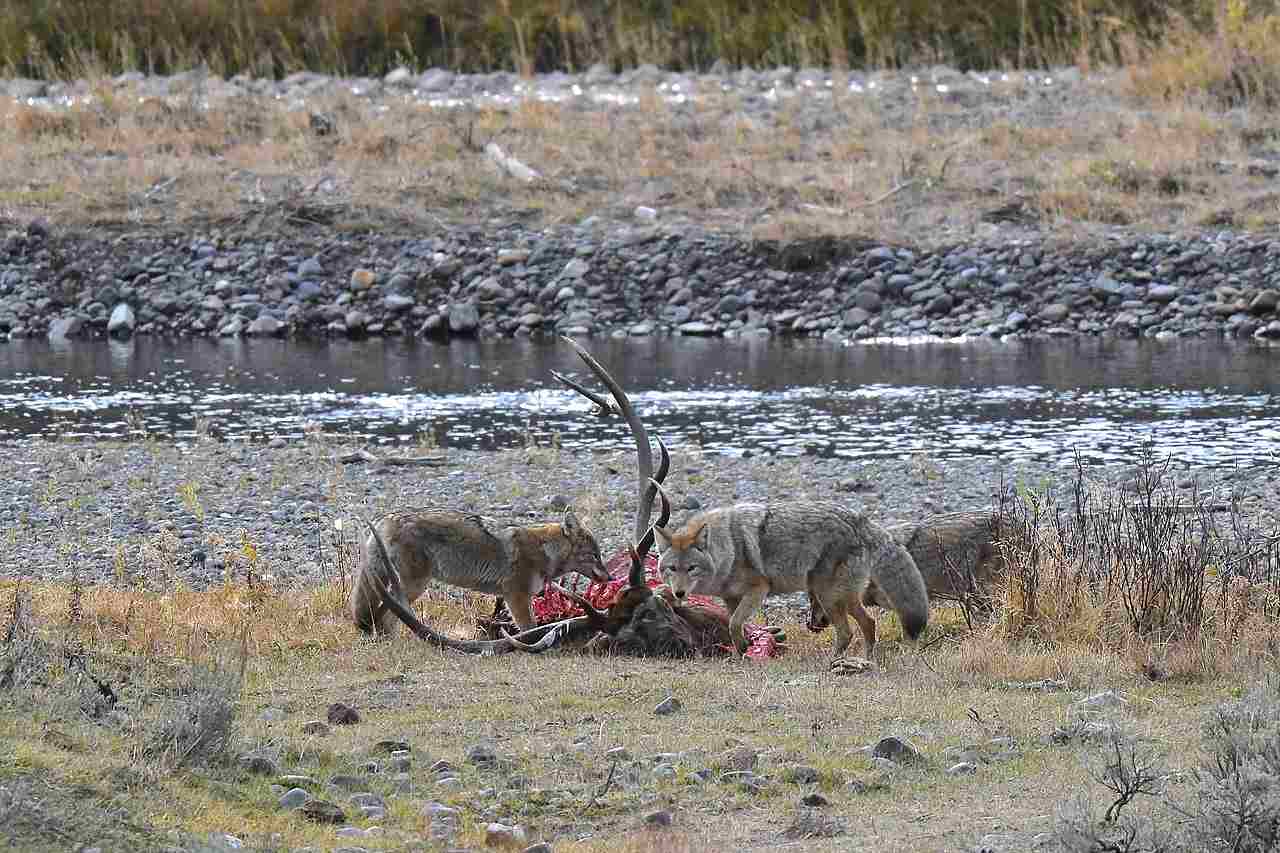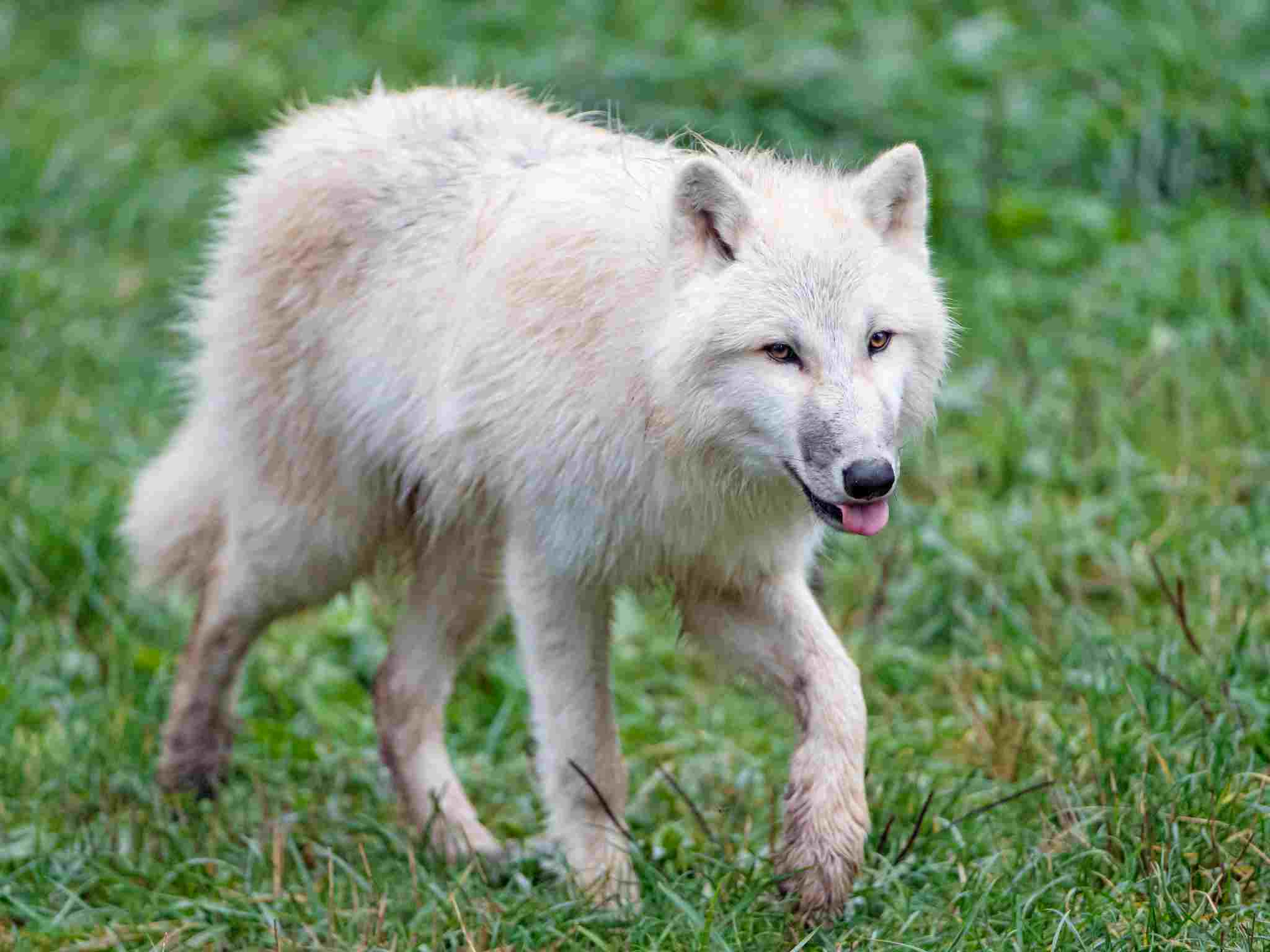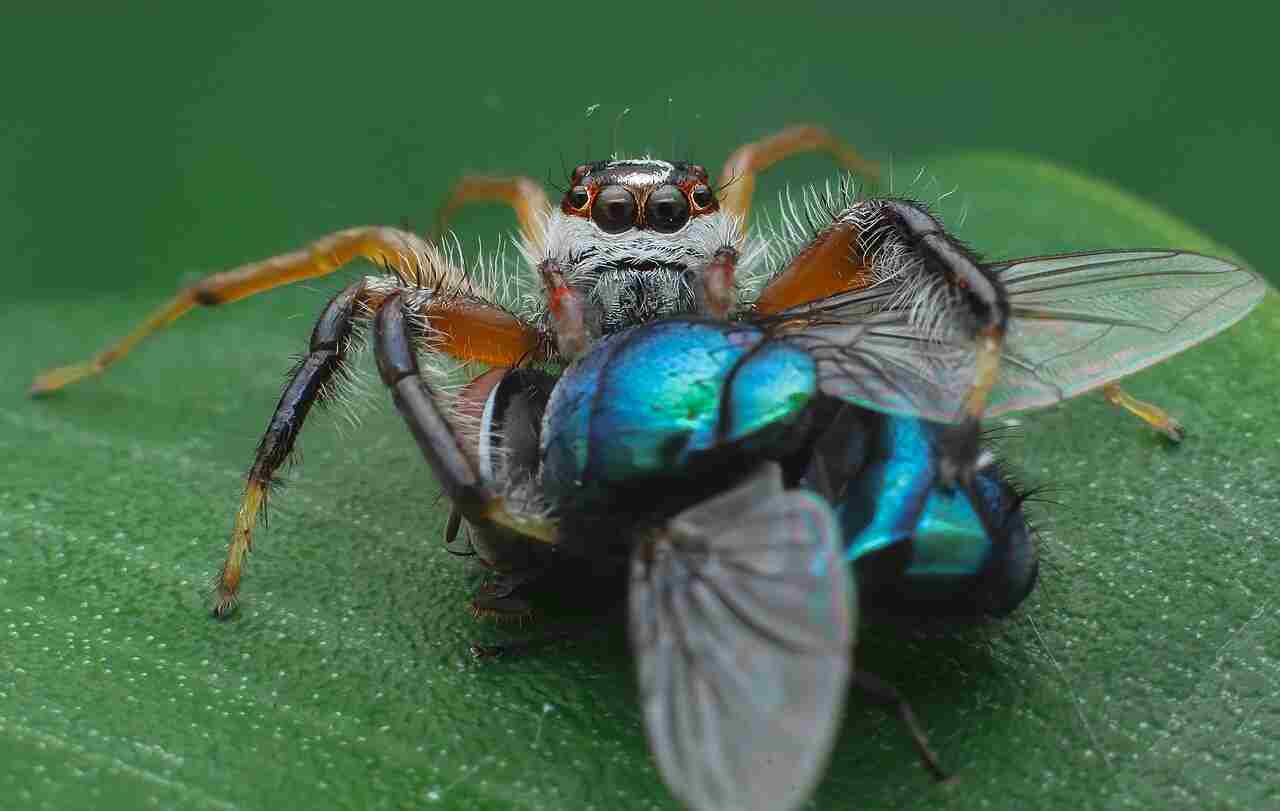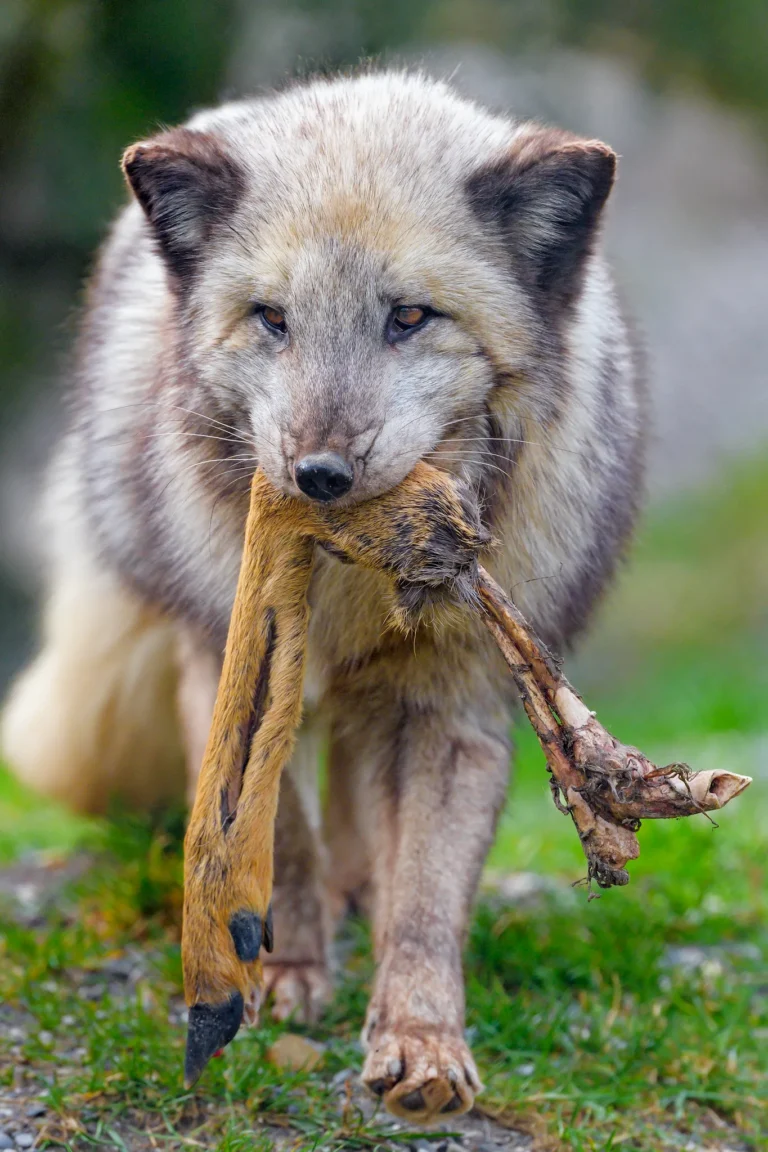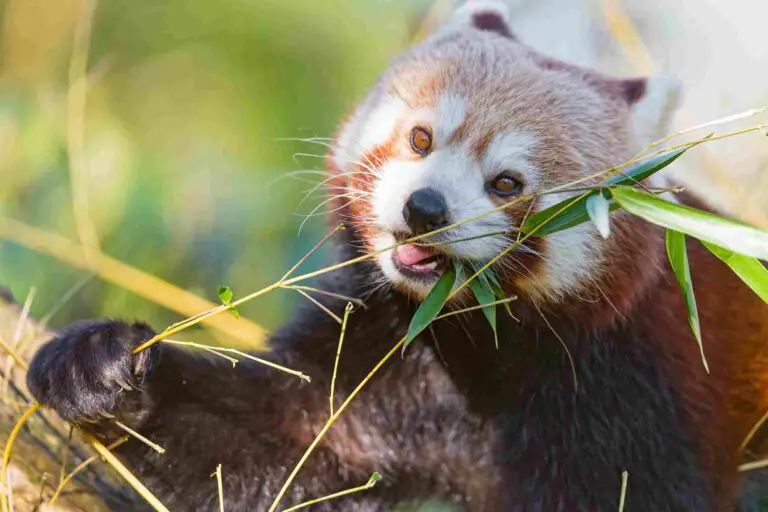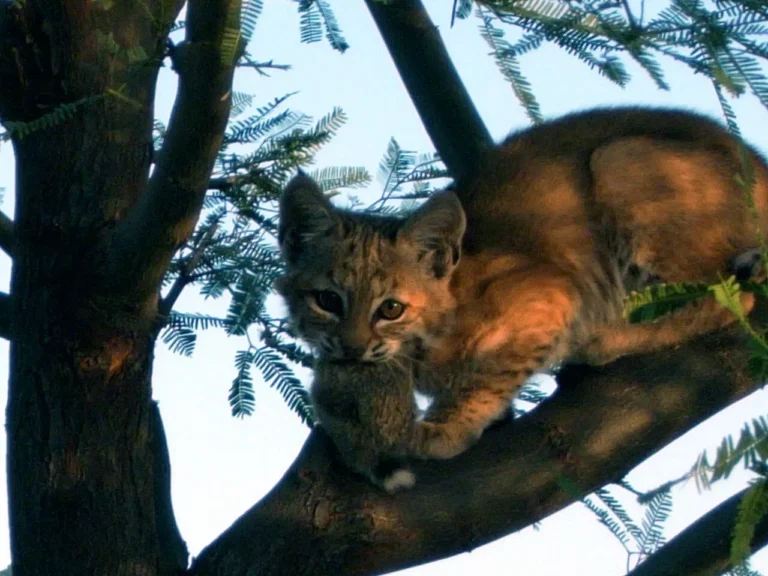15+ Predators In Arizona And Their Characteristics Discussed
Examples of predators in Arizona are mountain lions, wolves, and coyotes, which are crucial for controlling prey populations. Other notable predators include hawks, eagles, and rattlesnakes, each playing a unique role in the state’s diverse ecosystems. Smaller predators like kit foxes, scorpions, and spiders also contribute to the ecological balance by managing insect and rodent populations. Despite their importance, these predators face threats from habitat loss, human encroachment, and environmental contaminants, highlighting the need for conservation efforts to protect Arizona’s wildlife.
1. Mountain Lion
The Mountain Lion (Puma concolor), also known as the cougar, puma, or panther, is one of Arizona’s most formidable predators. These large cats are highly adaptable, found in a range of habitats from desert scrub to dense forests, often preferring rocky, mountainous terrains where they can find cover and stalk their prey. Adult males can weigh up to 150 pounds and stretch over 8 feet long from nose to tail, while females are slightly smaller. Despite their large size, mountain lions are elusive and typically avoid humans, hunting primarily at dawn and dusk when their prey, which includes deer and smaller mammals, is most active.
Mountain Lions in Arizona play a crucial role in maintaining the ecosystem’s balance by controlling prey populations. As apex predators, they help regulate the health and behavior of other species, indirectly contributing to plant diversity and landscape stability. Although their interactions with humans are rare, increasing urbanization and habitat loss have led to occasional encounters. To reduce potential conflicts, Arizona’s wildlife agencies promote awareness and safety measures for those living in or visiting mountain lion habitats. These majestic creatures are protected by state laws, ensuring their survival in the wild, where they continue to be an iconic symbol of Arizona’s rugged wilderness.
2. Wolf
The Mexican Gray Wolf (Canis lupus baileyi) is a subspecies of the Gray Wolf, reintroduced to Arizona in recent years as part of a federal recovery program. Historically, wolves once roamed much of the western United States, but extensive hunting and habitat loss led to their near extinction in the region. The reintroduction efforts in Arizona aim to restore this keystone predator to its natural ecosystem, contributing to a balanced environment by controlling prey populations such as elk and deer.
The Mexican Gray Wolf faces significant challenges in Arizona, including illegal poaching, habitat fragmentation, and conflicts with livestock. The reintroduction program involves intensive monitoring, with a mix of radio collars and tracking to understand the wolves’ movements and ensure their safety. Despite the challenges, these wolves are gaining a foothold in the state’s wilderness areas, bringing with them a resurgence of ecological health and diversity. Conservationists and wildlife enthusiasts see the reintroduction as a critical step in restoring Arizona’s natural heritage, though it remains a topic of debate among ranchers and rural communities.
3. Kit Fox
The Kit Fox (Vulpes macrotis) is the smallest member of the canid family in North America and is well-adapted to the arid landscapes of Arizona. With their large ears, slender bodies, and bushy tails, kit foxes are known for their nocturnal habits and preference for desert scrub habitats. They primarily feed on small mammals, insects, and birds, and they are expert diggers, creating complex burrows for shelter and protection from predators.
Despite their adaptability, kit foxes face threats from habitat loss, vehicular collisions, and human encroachment. They are particularly vulnerable to changes in their desert ecosystem, which can lead to reduced food sources and increased competition. Conservation efforts in Arizona focus on protecting their habitats and raising awareness about their importance to the desert ecosystem. As nocturnal hunters, they play a vital role in controlling rodent populations and maintaining the balance of the food web.
4. Grey Fox
The Grey Fox (Urocyon cinereoargenteus) is unique among fox species for its ability to climb trees, a skill that helps it evade predators and access food sources in Arizona’s diverse habitats. Found in forests, deserts, and grasslands, the grey fox has a distinctive salt-and-pepper coat and a black-tipped tail. It is an omnivore, feeding on a variety of foods, including small mammals, birds, insects, and plant matter like fruits and berries.
In Arizona, grey foxes contribute to the ecosystem’s health by controlling rodent populations and dispersing seeds through their varied diet. They are generally shy and elusive, preferring to hunt at night or during the early morning hours. Human activity and habitat destruction pose significant threats to grey fox populations, but they are relatively adaptable and can thrive in a range of environments. Conservation efforts focus on preserving their natural habitats and ensuring they can safely coexist with humans, particularly in areas where development encroaches on their traditional territories.
5. Hawk
Hawks are among the most recognizable birds of prey in Arizona, with several species inhabiting the state’s diverse landscapes. The Red-tailed Hawk (Buteo jamaicensis) is one of the most common, known for its striking red tail and broad wingspan. These raptors are skilled hunters, primarily preying on small mammals, birds, and reptiles. They are often seen soaring high in the sky or perched on power lines and trees, surveying the ground for potential meals.
Hawks play a crucial role in controlling populations of small mammals and other prey, contributing to the overall balance of Arizona’s ecosystems. They are adaptable and can thrive in various habitats, from deserts to forests to urban areas. However, they face threats from habitat loss, collisions with vehicles or buildings, and environmental pollutants. Conservation efforts aim to protect their habitats and educate the public about their importance in the food chain, emphasizing the need to preserve the spaces they require for hunting and nesting.
6. Eagle
The Bald Eagle (Haliaeetus leucocephalus) and the Golden Eagle (Aquila chrysaetos) are two of the most iconic eagle species found in Arizona. The Bald Eagle, with its distinctive white head and tail, is a symbol of the United States and has made a significant recovery from near-extinction. The Golden Eagle, known for its golden-brown plumage and powerful build, is a formidable predator capable of taking down large prey such as rabbits and young deer. Both species are found in various habitats, from forests to deserts to river systems.
Eagles are apex predators and play a vital role in Arizona’s ecosystems by controlling prey populations and scavenging carrion. They are also indicators of environmental health, as their presence reflects a well-balanced ecosystem. Despite their majestic status, eagles face threats from habitat loss, illegal hunting, and environmental contaminants such as lead and pesticides. Conservation efforts focus on protecting their habitats, reducing human disturbances, and ensuring the long-term survival of these magnificent birds in Arizona’s landscapes.
7. Coyote
The Coyote (Canis latrans) is one of Arizona’s most adaptable and widespread predators, capable of thriving in various environments, from deserts and forests to urban areas. Known for their distinctive howls and yips, coyotes are opportunistic hunters, feeding on a diverse diet that includes small mammals, birds, reptiles, insects, and even fruit. Their adaptability and intelligence have allowed them to expand their range across North America, often coexisting with humans in suburban and urban settings.
Coyotes play an important role in maintaining ecological balance by controlling rodent and rabbit populations. However, their adaptability also brings them into conflict with humans, especially in residential areas where they may prey on pets or scavenge for food. Wildlife agencies in Arizona work to educate the public about coyote behavior and promote coexistence strategies, emphasizing the importance of securing garbage and keeping pets safe. Despite the challenges, coyotes remain a resilient and vital part of Arizona’s wildlife, serving as a testament to the adaptability and tenacity of nature’s predators.
8. Lynx
The Lynx (Lynx canadensis) is a medium-sized wildcat known for its tufted ears, thick fur, and distinctive “beard.” In Arizona, the lynx is a rare visitor, typically found in more northern regions with dense forest cover and deep snow. These elusive predators are well-adapted to cold climates, with large, padded paws that act like snowshoes, allowing them to traverse snowy landscapes with ease. They primarily prey on small mammals like hares, birds, and rodents.
Though they are not common in Arizona, the presence of lynx indicates a relatively undisturbed and healthy ecosystem. Lynx are extremely shy and rarely encountered by humans. Their populations have faced pressures from trapping, habitat loss, and climate change, which affects their prey availability. Conservation efforts focus on protecting the habitats that support lynx and promoting corridors that allow them to migrate and breed. Lynx are a key component of northern ecosystems, contributing to the ecological balance by controlling prey populations.
9. Black Bear
The Black Bear (Ursus americanus) is Arizona’s only native bear species, primarily found in forested regions and mountainous areas. These bears are omnivorous, feeding on a wide variety of foods, including fruits, nuts, insects, and small mammals. They are also known to scavenge carrion and, occasionally, human-provided food sources, leading to potential conflicts with humans. Black bears in Arizona exhibit a high degree of adaptability, with some populations living at higher elevations and others in desert-edge environments.
In Arizona, black bears play a crucial role in seed dispersal and ecosystem maintenance, as they help control insect populations and aid in forest regeneration through their foraging habits. However, their interactions with humans can be problematic, especially in areas where food waste and other attractants are accessible. Wildlife agencies in Arizona work to mitigate these conflicts by promoting bear-proofing measures and educating the public about bear behavior. Conservation efforts also focus on maintaining the habitats that black bears require for feeding, breeding, and hibernation, ensuring their continued presence in Arizona’s landscapes.
10. Bobcat
The Bobcat (Lynx rufus) is a common wildcat found throughout Arizona, known for its distinctive short tail (“bobbed”) and tufted ears. These cats are highly adaptable, thriving in various habitats, including forests, deserts, and even suburban areas. Bobcats are solitary predators, primarily hunting small mammals such as rabbits, rodents, and birds. They are known for their agility and stealth, often stalking their prey before pouncing with precision and speed.
Bobcats play a significant role in maintaining ecosystem balance by controlling rodent and small mammal populations. In Arizona, they are generally elusive and avoid human interaction, but they can adapt to urban environments, leading to occasional sightings in residential areas. Conservation efforts for bobcats focus on preserving their habitats and minimizing human-wildcat conflicts. These wildcats are protected by state laws, ensuring their survival as an integral part of Arizona’s wildlife diversity.
11. American Badger
The American Badger (Taxidea taxus) is a burrowing mammal found in Arizona’s grasslands and desert regions. Known for their stocky build and powerful digging capabilities, badgers are well-equipped to excavate burrows and hunt underground prey like gophers and ground squirrels. Their distinctive black and white face markings make them easy to identify, and their fierce nature is well-documented, with badgers showing little hesitation when defending their territory.
In Arizona, American Badgers play a critical role in controlling rodent populations and aerating the soil through their burrowing activities. Despite their importance, they face threats from habitat loss, roadkill, and human-wildlife conflicts. Conservation efforts aim to protect the habitats where badgers are commonly found and to educate the public about their beneficial role in the ecosystem. These efforts help ensure that the American Badger continues to thrive in Arizona’s landscapes.
12. Coral Snake
The Coral Snake (Micrurus fulvius) is one of Arizona’s most venomous snakes, recognizable by its distinctive color bands of red, yellow, and black. Although highly venomous, coral snakes are generally shy and reclusive, preferring to hide under rocks or in dense vegetation. They are typically found in southern Arizona’s desert regions, where they hunt small reptiles and amphibians. The coral snake’s venom is a neurotoxin, which can be lethal, but bites to humans are extremely rare due to their elusive behavior and non-aggressive nature.
In Arizona, coral snakes contribute to the ecosystem by controlling populations of small reptiles and amphibians. Despite their venomous reputation, these snakes rarely pose a threat to humans if left undisturbed. Conservation efforts focus on preserving their natural habitats and raising awareness about their beneficial role in the ecosystem. Given their rarity and shy demeanor, coral snakes are best appreciated from a safe distance, with the emphasis on avoiding unnecessary confrontations.
13. Gila Monster
The Gila Monster (Heloderma suspectum) is one of the most distinctive reptiles in Arizona, known for its vibrant orange and black patterned skin and slow, lumbering movements. It is also one of the few venomous lizards in the world, with venom glands in its lower jaw. Despite its fearsome reputation, the Gila Monster is generally non-aggressive and uses its venom primarily for subduing prey, not for defense. These lizards are found in desert habitats, where they feed on small mammals, birds, and eggs.
The Gila Monster plays a unique role in Arizona’s desert ecosystem, contributing to the regulation of prey populations. Due to its slow reproduction rate and limited range, it is considered a vulnerable species. Threats to the Gila Monster include habitat loss, illegal collection for the pet trade, and roadkill. Conservation efforts focus on protecting its desert habitats and raising awareness about its ecological importance. The Gila Monster is protected by state laws, ensuring that this remarkable lizard continues to be a symbol of Arizona’s unique wildlife.
14. Scorpion
Scorpions are common arachnids in Arizona, with over 30 species found throughout the state. The most well-known is the Arizona Bark Scorpion (Centruroides sculpturatus), which is highly venomous and often associated with painful stings. Scorpions are nocturnal predators, hunting at night and preying on insects and small animals. They are equipped with a stinger at the end of their tail, which they use to inject venom into their prey or in self-defense.
Scorpions play a crucial role in Arizona’s ecosystems by controlling insect populations. Despite their beneficial role, scorpions can be a concern in residential areas, especially when they find their way into homes and other structures. Safety precautions, such as sealing entry points and using blacklights to detect scorpions at night, help minimize human-scorpion encounters. Conservation efforts focus on maintaining the natural habitats where scorpions thrive and educating the public about their importance in the ecosystem.
15. Spider
Spiders are abundant in Arizona, with a wide range of species inhabiting the state’s diverse environments. One of the most notorious is the Black Widow (Latrodectus spp.), known for its venomous bite and distinctive red hourglass marking on the abdomen. Another notable species is the Tarantula (Theraphosidae family), which, despite its large size, is generally non-aggressive and harmless to humans. Spiders play a crucial role in controlling insect populations, acting as natural pest control in Arizona’s ecosystems.
Spiders face relatively few threats compared to other predators, but habitat loss and urbanization can impact their populations. While most spiders are harmless to humans, some, like the Black Widow, require caution due to their venomous bites. Conservation efforts in Arizona aim to maintain spider habitats and educate the public about their beneficial role in the ecosystem. By reducing unnecessary fear and promoting spider-friendly practices, Arizona can ensure that these vital arachnids continue to contribute to the state’s biodiversity.
16. Rattlesnake
Rattlesnakes are among Arizona’s most well-known and feared reptiles, with several species inhabiting the state’s desert and mountainous regions. The Western Diamondback Rattlesnake (Crotalus atrox) is the most common and recognizable, known for its diamond-shaped markings and distinctive rattle at the end of its tail. Rattlesnakes are venomous and use their venom to subdue prey, primarily small mammals like mice and rats. They are generally non-aggressive and will use their rattle as a warning signal to avoid confrontation.
Rattlesnakes play a vital role in Arizona’s ecosystems by controlling rodent populations. Despite their beneficial role, they are often misunderstood and feared due to their venomous nature. Conservation efforts focus on educating the public about rattlesnake behavior and promoting safety measures to minimize human-snake encounters. These efforts include proper hiking etiquette, awareness of snake habitats, and the use of snake repellents in residential areas. By promoting respect and caution, Arizona can ensure the safety of both humans and rattlesnakes, preserving these reptiles’ important ecological role.
17. Tarantula
Tarantulas are large, hairy spiders found in Arizona, known for their imposing appearance but generally docile behavior. The Desert Blonde Tarantula (Aphonopelma chalcodes) is a common species, often encountered in the desert regions of the state. Despite their intimidating size, tarantulas are harmless to humans and rarely bite unless provoked. They primarily feed on insects and small vertebrates, using their venom to immobilize prey before consuming it.
In Arizona, tarantulas contribute to the ecosystem by controlling insect populations and providing a food source for larger predators. They are often seen during their mating season, where males venture out in search of females. While tarantulas face fewer threats compared to other wildlife, habitat loss and urbanization can impact their populations
*Summary
-
Mountain Lion: Large, adaptable predator in Arizona’s forests and deserts; controls deer and other prey populations.
-
Wolf: Mexican Gray Wolf reintroduced in Arizona; a key predator with conservation challenges, including illegal poaching and habitat loss.
-
Kit Fox: Smallest canid in North America; nocturnal, lives in desert scrub habitats; threatened by habitat loss and human encroachment.
-
Grey Fox: Unique among foxes for tree-climbing ability; found in forests, deserts, and grasslands; omnivorous diet, adaptable to human presence.
-
Hawk: Common raptor in Arizona; Red-tailed Hawk is most common; plays a role in controlling small mammal populations; faces threats from habitat loss.
-
Eagle: Bald Eagle and Golden Eagle are iconic in Arizona; apex predators; threatened by habitat loss and environmental contaminants.
-
Coyote: Highly adaptable; found in various environments; controls rodent and rabbit populations; can cause human-wildlife conflicts.
-
Lynx: Rare visitor to Arizona; prefers colder climates; contributes to ecosystem balance by controlling prey populations.
-
Black Bear: Arizona’s only native bear; omnivorous; plays a role in forest regeneration and insect control; faces conflicts with humans.
-
Bobcat: Common wildcat in Arizona; adaptable to various habitats; solitary predator that controls rodent populations.
-
American Badger: Burrowing mammal; found in grasslands and deserts; contributes to controlling rodent populations; faces threats from habitat loss.
-
Coral Snake: Highly venomous; recognized by distinct color bands; shy and reclusive; bites are rare; plays a role in controlling reptile and amphibian populations.
-
Gila Monster: Venomous lizard with slow movements; contributes to regulating prey populations; threatened by habitat loss and illegal collection.
-
Scorpion: Over 30 species in Arizona; Arizona Bark Scorpion is highly venomous; plays a role in controlling insect populations.
-
Spider: Abundant in Arizona; Black Widow is notorious; Tarantulas are large but generally harmless; crucial for controlling insect populations.
-
Rattlesnake: Venomous reptiles; Western Diamondback is most common; vital for controlling rodent populations; misunderstood and feared by many.
-
Tarantula: Large, hairy spiders; Desert Blonde Tarantula is common; harmless to humans; contributes to controlling insect populations.
| Predator | Description |
| Mountain Lion |
Large, adaptable predator; controls deer populations
|
| Wolf |
Reintroduced Mexican Gray Wolf; conservation challenges
|
| Kit Fox |
Smallest canid; nocturnal, desert habitats
|
| Grey Fox |
Unique for tree climbing; omnivorous, adaptable
|
| Hawk |
Common raptor; controls small mammal populations
|
| Eagle |
Bald Eagle and Golden Eagle; apex predators
|
| Coyote |
Highly adaptable; controls rodent and rabbit populations
|
| Lynx |
Rare in Arizona; prefers colder climates
|
| Black Bear |
Arizona’s only native bear; omnivorous
|
| Bobcat |
Common wildcat; adaptable to various habitats
|
| American Badger |
Burrowing mammal; controls rodent populations
|
| Coral Snake |
Highly venomous; shy and reclusive
|
| Gila Monster |
Venomous lizard; contributes to regulating prey populations
|
| Scorpion |
Over 30 species; Arizona Bark Scorpion is highly venomous
|
| Spider |
Abundant in Arizona; Black Widow, Tarantulas; controls insects
|
| Rattlesnake |
Venomous; Western Diamondback is common; controls rodents
|
| Tarantula |
Large spiders; harmless; contributes to controlling insects
|
